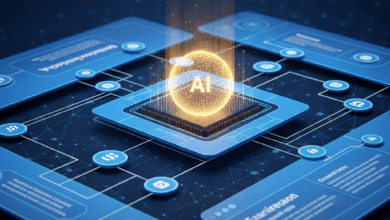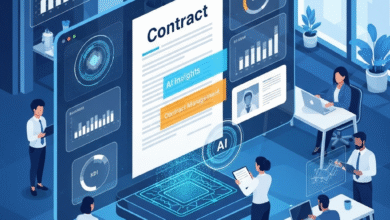Google AI helps marketers
What's one way Google AI helps marketers connect with potential customers?

The AI-Powered Bridge: How Google’s Tech Revolutionizes Marketer-Customer Connections (For Real Humans)
Let’s cut through the noise. You’ve been in the trenches of SEO and marketing for two decades, like me. You’ve seen algorithms rise and fall, tactics come and go, and the constant drumbeat of “the next big thing.” Amidst this whirlwind, one question cuts to the core of our daily struggle: “What’s one way Google AI helps marketers connect with potential customers?“ Forget the hype; let’s talk about the tangible, results-driven powerhouse that consistently delivers: Performance Max campaigns powered by Google AI. This isn’t just another tool; it’s the closest thing we have to an automated, intelligent growth engine operating at Google’s scale.
Why “What’s One Way Google AI Helps Marketers Connect with Potential Customers?” Isn’t Just a Keyword – It’s Survival
The marketing landscape isn’t just competitive anymore; it’s fragmented, noisy, and moves at light speed. Consumers zigzag across YouTube, Search, Maps, Gmail, Discover, and millions of Display sites. Manually tracking intent signals across this universe? Impossible. Manually optimizing bids and creative for every permutation? A fantasy. That’s where Google AI steps in, not as a replacement for human strategy, but as the indispensable force multiplier we’ve needed.
Performance Max (PMax) embodies the answer to “what’s one way Google AI helps marketers connect with potential customers?” It leverages Google’s unparalleled datasets, advanced machine learning models, and massive computing power to do what humans simply cannot: simultaneously analyze billions of signals, predict conversion probability in real-time, discover hidden audiences, and dynamically serve the most compelling ad variation – all across Google’s entire ecosystem. It connects the dots we can’t even see.
How Google AI Connects Marketers with Potential Customers: Performance Max Deconstructed
So, what’s one way Google AI helps marketers connect with potential customers? Let’s dissect the Performance Max machinery:
-
The AI Audience Whisperer: Finding Signals in the Static
-
Beyond Keywords & Lists: Forget solely relying on painstakingly built keyword lists or static audience segments. PMax starts with your goal (sales, leads, website traffic, etc.). The AI then scours Google’s vast network – Search queries, YouTube watch patterns, app usage, website visitation behavior, location signals, and more – actively hunting for users exhibiting intent signals that align with your objective.
-
Discovering the “Unknown Unknowns”: This is where the magic happens for marketers aiming to connect with potential customers. Google AI identifies audiences you didn’t know existed – people searching for solutions adjacent to yours, watching explainer videos for related problems, or browsing sites your competitors frequent. It finds demand you weren’t actively targeting.
-
Real-World Impact: A premium home services company struggling to reach homeowners with specific, urgent needs (like emergency plumbing or HVAC) saw PMax discover audiences searching for “water pressure suddenly low” or “strange furnace noises” – intent-rich signals they hadn’t explicitly targeted, leading to a 143% increase in qualified leads within 3 months. That’s how Google AI helps marketers connect with potential customers.
-
-
Creative Alchemy: AI That Crafts the Right Message for the Right Human
-
Asset-Based, Not Ad-Based: You provide the raw ingredients: headlines (short & long), descriptions, images (landscape, square, portrait), logos, and videos. You don’t build rigid ads. This answers “what’s one way Google AI helps marketers connect with potential customers?” by dynamically assembling the best combination in the moment.
-
Context is King: The AI understands where the ad is showing (YouTube pre-roll vs. Discover feed vs. Gmail promo tab) and who is seeing it (based on predicted interests and intent). It then selects and combines assets to create the most relevant and compelling ad variation for that specific context and user.
-
Constant Optimization: It relentlessly tests variations, learning which combinations drive the best results for different audience segments and placements. It automatically scales winners and pauses losers.
-
Real-World Impact: An e-commerce fashion brand uploaded dozens of lifestyle images and product videos. PMax dynamically showed video-centric ads to users binge-watching fashion hauls on YouTube, while serving image-heavy carousels to users browsing style inspiration on Discover. This contextual tailoring drove a 38% lower cost-per-acquisition (CPA). This is precisely how Google AI helps marketers connect with potential customers effectively.
-
-
The Autonomous Bid & Placement Maestro: Putting Your Budget Where the AI Sees Opportunity
-
Goal-Oriented Bidding: You set the target (e.g., target CPA, target ROAS, maximize conversions). Google AI then becomes your 24/7 auction strategist. It predicts the likelihood of each impression leading to your desired outcome and bids aggressively when confidence is high and conservatively when it’s low.
-
Omnichannel Optimization: It doesn’t silo channels. The AI evaluates all opportunities across Search, Shopping, YouTube, Display, Discover, Gmail, and Maps simultaneously. It allocates budget dynamically to the placements and audiences delivering the best results towards your goal right now.
-
Real-Time Adaptation: Market conditions change? Competitor activity spikes? User behavior shifts seasonally? The AI adapts bidding and placement strategies in milliseconds.
-
Real-World Impact: A local SaaS company used PMax with a target lead cost. The AI automatically shifted budget towards high-intent Search queries during business hours, pushed YouTube ads showcasing product demos in the evenings, and prioritized Maps location extensions when users were physically near their HQ or relevant industry hubs – optimizing spend across the day and touchpoints, achieving a 22% lower cost-per-lead. Demonstrating how Google AI helps marketers connect with potential customers efficiently.
-
Why Performance Max Answers “What’s One Way Google AI Helps Marketers Connect with Potential Customers?” So Powerfully
-
Scale Meets Precision: Reach vastly wider audiences than manual campaigns, but with AI ensuring relevance and efficiency. It connects you to potential customers at the sheer scale of Google’s network.
-
Unlocks Hidden Demand: Finds customers actively looking for solutions you offer but who aren’t using the exact keywords or visiting the specific sites on your radar. Google AI helps marketers connect with potential customers they wouldn’t find otherwise.
-
Hyper-Personalization at Scale: Dynamically tailors messaging and creative to resonate with diverse audience segments across different contexts, answering “what’s one way Google AI helps marketers connect with potential customers?” with personalized relevance.
-
Efficiency & Time Savings: Automates the incredibly complex tasks of cross-channel bidding, placement optimization, and creative testing. Frees up marketers for high-level strategy and creative development. Google AI handles the heavy lifting of connection.
-
Continuous Improvement: Machine learning means the campaign gets smarter over time, constantly refining its understanding of what works to connect you with valuable customers.
Implementing Performance Max: Leveraging Google AI to Connect with Potential Customers (Best Practices from the Trenches)
Knowing what’s one way Google AI helps marketers connect with potential customers is step one. Implementing PMax effectively is step two. Here’s how to wield this AI tool like a pro:
-
Crystal Clear Goals: AI needs direction. Set a primary conversion goal in Google Ads (purchases, leads, store visits, etc.). Ambiguity confuses the machine. What does “connect” mean for you? Define it precisely. This is foundational for Google AI helps marketers connect with potential customers effectively.
-
Feed the Beast: Comprehensive Asset Strategy: Your inputs dictate the AI’s outputs.
-
Diversity is Key: Provide multiple high-quality images (min. 5-10: lifestyle, product shots, logos on different backgrounds), videos (short explainers, testimonials, product demos – min. 2-3), headlines (min. 5-10 mixing benefits, features, CTAs), and descriptions (min. 5). Don’t skimp!
-
Quality Matters: Blurry images, poorly shot videos, or generic headlines cripple performance. Invest in professional creative.
-
Relevance & Compliance: Ensure all assets accurately represent your brand, product, and landing page. Follow Google’s policies strictly. Poor assets mean Google AI helps marketers connect with potential customers poorly.
-
-
Audience Signals (Not Targets): PMax uses audiences differently.
-
Signal Intent: Feed it your best-performing customer segments (e.g., website converters, high-value customer lists, engaged YouTube viewers) or detailed demographics/interests as signals. This tells the AI, “Find more people like these.” Don’t use them as strict targeting constraints; let the AI expand.
-
Exclude Prudently: Exclude known irrelevant audiences (e.g., existing customers if not desired, employees).
-
-
Landing Page Harmony: Ensure your landing pages are relevant, fast-loading, mobile-optimized, and deliver on the ad’s promise. AI drives traffic; a poor landing page kills conversions. The connection happens after the click.
-
Smart Budget Allocation: Start with sufficient budget for the AI to learn effectively (typically higher than a standard campaign). Use shared budgets across similar campaigns strategically. Remember, Google AI helps marketers connect with potential customers across multiple channels simultaneously.
-
Embrace Automation, Maintain Oversight: Let the AI optimize bids and placements. Don’t constantly tweak. However:
-
Monitor Asset Reports: See which headlines, descriptions, images, and videos are performing best. Feed winners into future creative development. Replace consistent losers.
-
Analyze Insights: Use the “Insights” tab within PMax to understand new customer segments found, top-performing search themes, and rising trends.
-
Track Core Metrics: Monitor conversions, CPA/ROAS, impression share, and overall spend efficiency. Set up conversion tracking flawlessly. Understanding what’s one way Google AI helps marketers connect with potential customers requires measuring the results.
-
Beyond the Hype: The Human-AI Partnership Required to Connect
Performance Max is powerful, but it’s not magic pixie dust. Google AI helps marketers connect with potential customers effectively only when guided by human expertise:
-
Strategic Direction: AI needs goals and quality inputs. Your business acumen sets the course.
-
Creative Excellence: The AI assembles and tests, but humans must create compelling, authentic assets.
-
Data Interpretation: AI surfaces insights; humans must analyze them for strategic implications beyond the campaign.
-
Brand Guardianship: Ensure AI-driven messaging always aligns with brand voice and values.
-
Testing & Experimentation: Run A/B tests (e.g., different asset sets, different landing pages) even within PMax’s automation.
The Future of Connection: Where Google AI Takes Us Next
The evolution answering “what’s one way Google AI helps marketers connect with potential customers?” is relentless. Expect:
-
Deeper Creative Intelligence: AI generating more sophisticated ad variations, potentially suggesting entirely new creative concepts based on performance data.
-
Enhanced Predictive Modeling: Even more accurate forecasting of customer lifetime value and cross-channel attribution within PMax.
-
Tighter Merchant Center & Local Integration: Seamlessly blending product feeds, local inventory, and store visits into the omnichannel optimization.
-
Conversational AI Integration: Leveraging advancements like Gemini to create more dynamic ad interactions or personalized landing experiences based on user queries. The way Google AI helps marketers connect with potential customers will become increasingly conversational and intuitive.
Conclusion: The AI Bridge is Built – It’s Time to Cross
So, what’s one way Google AI helps marketers connect with potential customers? Performance Max stands as the most comprehensive, automated, and scalable answer available today. It leverages Google’s unparalleled AI to solve the fundamental marketer challenge: finding valuable audiences across a fragmented digital universe and delivering the right message at the right time, efficiently and effectively. It connects the dots at a speed and scale impossible for humans alone.
This isn’t about replacing the marketer; it’s about augmenting our capabilities. By understanding how Google AI helps marketers connect with potential customers through PMax, feeding it the right strategic goals and high-quality creative fuel, and maintaining intelligent oversight, we harness a transformative force. The bridge between your brand and your next valuable customer is built on Google AI. It’s time to step onto it and accelerate your growth. Stop wondering “what’s one way Google AI helps marketers connect with potential customers?” – implement Performance Max strategically and witness the connection happen.





